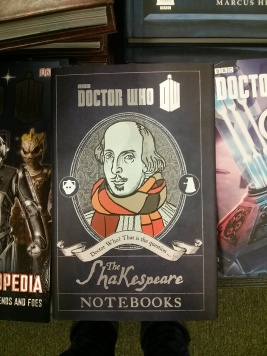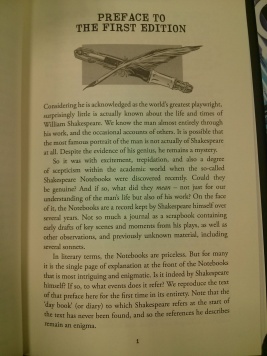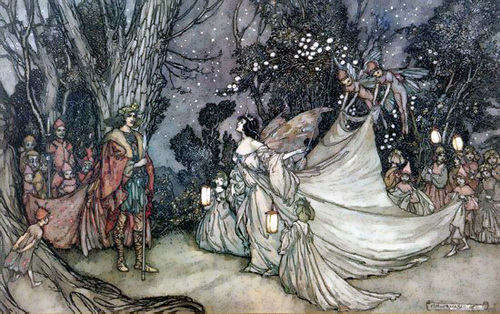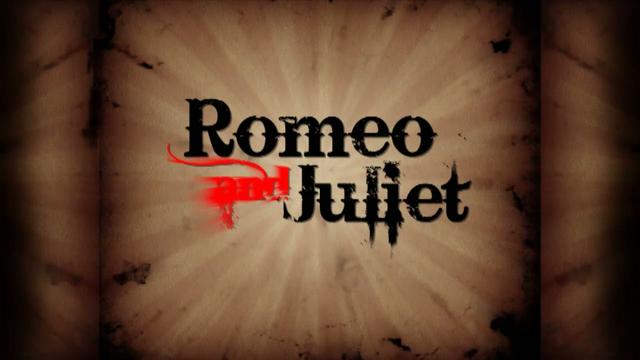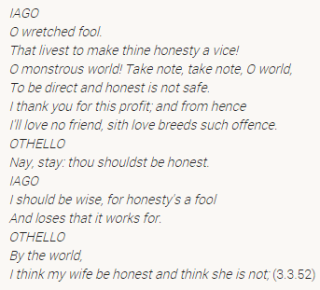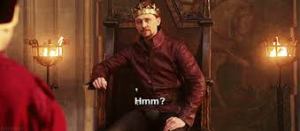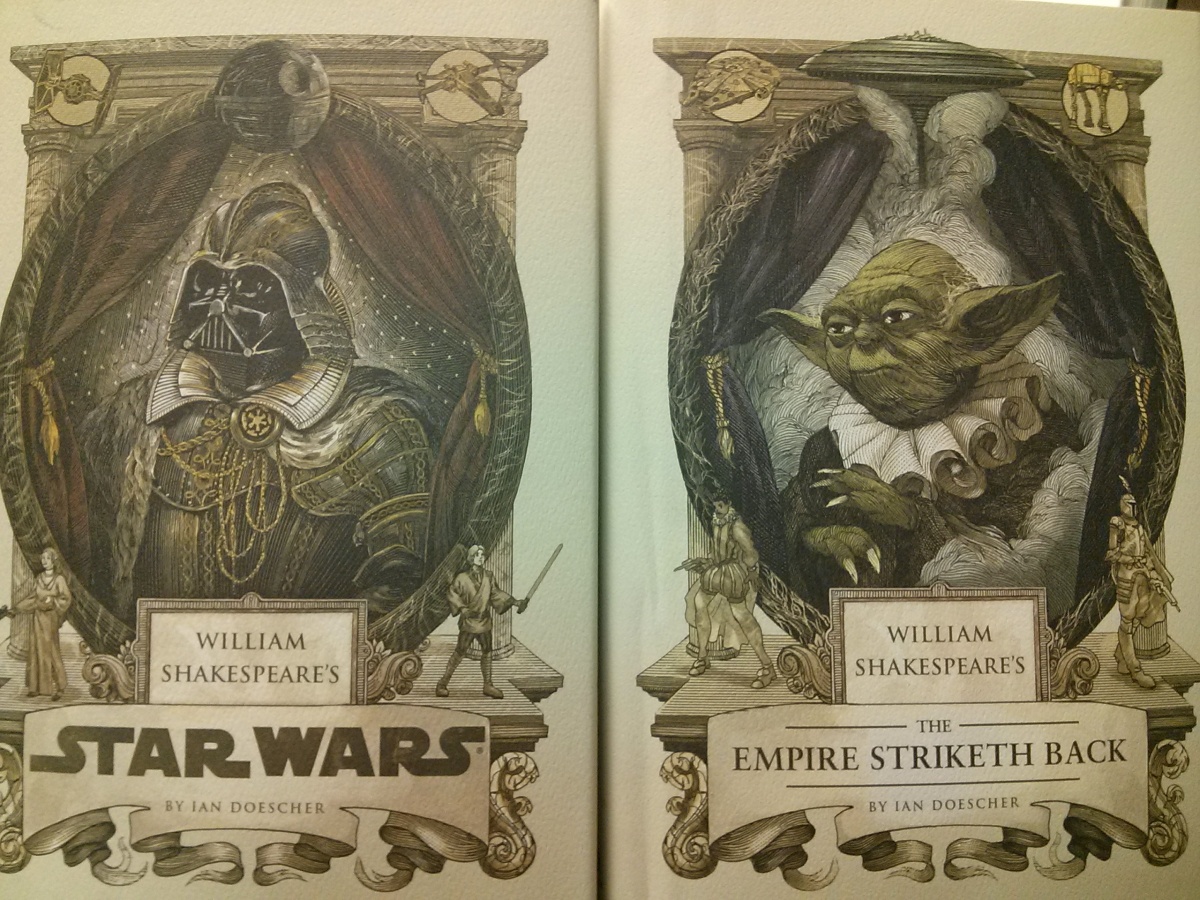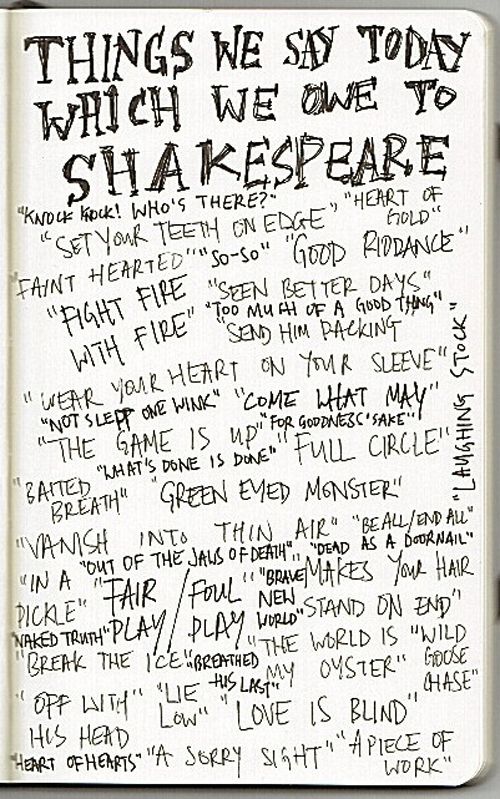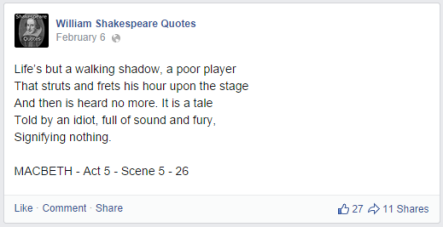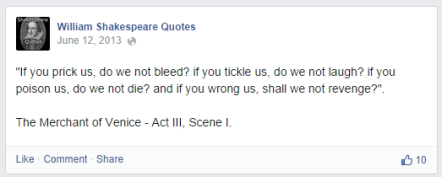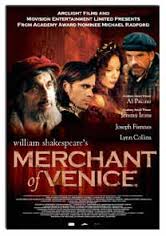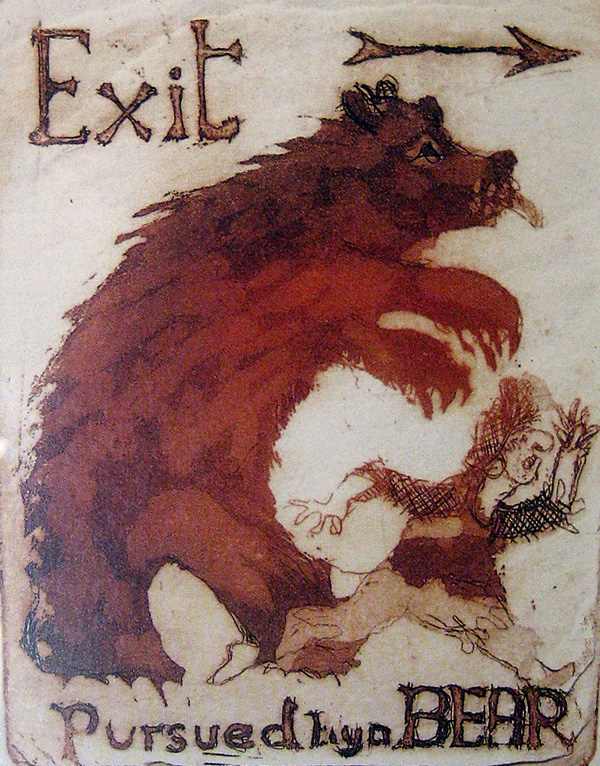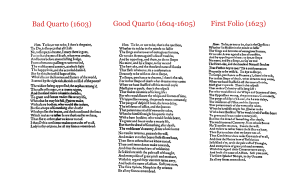This post is not related to Shakespeare in media, just Shakespeare in general, but I hope you’ll find my essay interesting nevertheless.
A Midsummer Night’s Dream:
Oberon, king of the fairies and the gods?
William Shakespeare makes many references to Greek and Roman mythology in his poems and plays. Shakespeare is a master of using these allegories to support his messages; however, none of his references to Roman mythology play a more intricate role in the playwright’s works than those in A Midsummer Night’s Dream. In this play, King Oberon parallels the Roman god Jupiter by preaching the deity’s adamant aversion to the dark; yet (like the Roman deity), the fairy king has a tendency to contradict his words by reveling in mischief. Oberon mimics Jupiter’s vast knowledge of the other Roman gods/goddesses, he interacts with humans, and Queen Titania has Juno-like characteristics which further connect the fairies to the Roman gods/goddesses. King Oberon must resemble Jupiter because this association explains why A Midsummer Night’s Dream is resolved as a Shakespearean comedy should be, with all of the lovers paired with their respectful partners; King Oberon’s meddling but ultimate need to right his actions are the driving force behind the resolution of the play.
Early Roman spirits, like all mythological creatures, had very specific spheres of influence and roles they played in people’s lives. However, it was the assimilation of Greek mythology that anthropomorphized twelve of the original Roman gods/goddesses, giving these deities particular human-like character traits, personalities, and abilities (Shelton 365). Since then, Jupiter is always referenced as the deity he became after Rome’s “Greek encounter.” So, Jupiter, like Zeus, is a god associated with the thunderbolt and strength; meddled in the lives of humans (he particularly tampered in the lives of women and lovers); and he was king of the other gods/goddesses, his wife Juno was queen. While Oberon does not go around throwing thunderbolts, he does have strength and dominance over both his subjects and humanity. And, he has a queen who also holds power but is slightly less dominant than he is. These two facts are exemplified in the way Oberon is able to manipulate his Queen into giving him the “changeling boy” in the play through the use of the potion after she soberly refuses (Midsummer 1.2.118-120). Titania is a powerful governess, she even has a spirit entourage that follows her around, but ultimately her husband is the one in charge of the realms and individuals’ actions. The potion allows Oberon to manipulate peoples’ freewill unseen as if he is godlike.
The dichotomy of Jupiter and Pluto is common knowledge; in layman’s terms Jupiter is associated with light and life, and Pluto the darkness of the Underworld and its dead inhabitants. In 3.2 of A Midsummer Night’s Dream the fairy Robin refers to Oberon as the “king of shadows” and in Oberon’s next dialogue the king instructs Robin to shadow the night by covering the stars and “dripping fog as black as Acheron,” which is a river in the Underworld, so that the human lovers do not run into one another (348-358). Under the night’s watchful eye, Oberon instructs his puck fairy to enchant the youth. It should be noted that while night certainly is the setting of these actions, the fairy king has what he considers to be good intent for his so-called “mischief,” only wanting to pair the humans with someone who actually loves them (e.g. Helena with Demetrius). Oberon is even upset when this plan goes haywire because Robin tampers with consensual true love. Of course, it can certainly be argued (and well defended) that forcing love upon someone is not innocent in the least and may even be considered a very tainted action morally. However, it is not Oberon’s or Jupiter’s actions, but their intent that differentiates them from Pluto whose mythological tale is shrouded in dark motives.
Furthermore, in this same scene of the play Oberon insists that the fairies are not dark spirits, claiming they are “spirits of another sort” and that he “with the morning’s love [has] oft made sport” (389-390). The fact that Oberon interacts with the morning, with light, allows a reader to interpret him as a Jupiter-like character because the fairy king is directly juxtaposing Pluto’s realm by insisting that his presence is often connected to the light. In Roman mythology, Pluto is kept away in the underworld, rarely ever leaving his domain there. On the other hand, Jupiter was the State god – the main protector/patron saint of Rome – and therefore thought to preside in almost every Roman action (Shelton 361). Jupiter was praised during a Roman triumph with grand parades and festivals during the day. While it is true that the people of Athens do not vocally recognize the fairies throughout A Midsummer Night’s Dream, Oberon still plays a central role in the peoples’ merriment and festivities; had it not been for his actions, the wedding at the end of the play may not have been a happy occasion – Hermia and Demetrius may have been forced to be with one another leaving both Lysander and Helena alone and heartbroken.
Yet, while Jupiter certainly resides in the light, he presides over public morality and sometimes revels in impure acts under the sun’s watchful eye. The Romans considered their gods to exist on an Earthly plane – the gods were not located in a Heaven or faraway Mount Olympus – even interacting with humans to the extent that the gods and humans had offspring called Demigods. Owen Barfield describes what exactly it means to be a rational creature; his qualification is that to be rational, i.e. to possess consciousness, one must be a tangible being (211-212). However, it can be argued that Barfield did not take into account the possibility of “the god factor.” The ability to govern realms and make decisions that affect everyday occurrences proves that deities have to contain some capacity to rationalize and make levelheaded decisions. However, since they are intangible and therefore do not follow Barfield’s only requirement we should think of the gods as having a semi-status. Or, in other words, while gods/goddesses can rationalize, they have a tendency to often act animalistic, i.e. irrational, lustful, and based on their emotions. In the play, all of the fairies at one point or another demonstrate this godlike ability to rationalize at certain times and be completely emotionally driven in other instances. Oberon’s rationality is portrayed through his good intent for the lovers, as described in previous paragraphs; but, the fairy king does partake in certain actions solely based on greed and spite/petty jealously when he gives Titania the potion to force her to give him the changeling boy and when Oberon forces his queen under the influence of the same potion to fall in love with Bottom who at this time in the play has the head of an ass.
Another way in which the fairies’ and gods’ semi-rationality can be contrasted with human rationality is through the laws of love in the play. In Athens, young women are the property of their fathers (to make another connection to antiquity, this was also the case in Ancient Rome). So, when first speaking with Theseus, Hermia is told that she must obey her father Egeus’ wishes and marry Demetrius even though she loves Lysander; Theseus specifically tells Hermia, “For you, fair Hermia, look you arm yourself to fit your fancies to your father’s will, or else the law of Athens yields you up – which by no means we may extenuate – to death or to a vow of single life” (Midsummer 1.1.117-121). There is no leeway, Hermia must obey her father or face death or a life of chastity. Theseus does not agree to allow Hermia to marry Lysander until Demetrius no longer wishes to marry Hermia because of his love for Helena; even in this instance mans’ will and wants overpower women’s. In contrast, Oberon cares not for the lovers’ parents’ wishes – the thought never even seems to cross his mind; his only concern is that the youth be marry with consensual true love. The fairy king bypasses the laws of Athens, instead focusing solely on the emotion that is love, which portrays that the fairies can let their hearts and not their minds run their actions at times. The Roman gods acted the same way as the fairies; at times Jupiter and Juno had to be just leaders, but in other circumstances Jupiter fell into lust with human women who birthed children such as Hercules and Perseus. And, Juno is well-known for her jealousy over Jupiter’s affairs and her hypocritical viewpoint of what is an “ideal family.” While the human authority figures in Athens seem to be completely driven by reason, both the gods and fairies demonstrate a mesh of human and animal rationality/irrationality.
Another similarity between Oberon and Titania in particular to the Roman deities is their abundant knowledge of the other spirits around them. Having to govern and oversee the actions of his brothers and sisters, Jupiter knows much about the other Roman deities; and – being a strong, willful queen – Juno knows much about her godly family as well. Oberon and Titania’s many references to other gods/goddess – particularly Roman gods/goddesses – is therefore a key element that pins the two fairies to the mythology. Oberon mentions rivers and other associations with Pluto’s realm throughout 3.2, but the fairy king also directly names Diana and Cupid in 4.1 when waking Titania from the influence of the potion (72-74). This is significant because not only is Oberon referencing the name of Roman gods, but he is also demonstrating his knowledge of these gods’ significance, i.e. the roles the gods were thought to play in certain situations and the powers they held. Diana – known as Artemis in Greek mythology – is deeply associated with the moon, the hunt, and virginity and Cupid is known for love and also lust. Oberon has just allowed Titania to fall into lust with a man with the head of an ass, a monster, and is telling her when she wakes that, “Dian’s bud o’er Cupid’s flower hath such force and blessèd power” (4.1.72-73). Or, in other words, Oberon is stating that chastity/faithfulness have power over lustful desires when there is love between two individuals. On a similar note, earlier in the play Titania shows her knowledge of other deities as well by referring to Neptune (2.1.126) and the Norse god Heims (2.1.109). Since Heims is not Roman, some may rule-out this reference as being irrelevant, but it may be viewed as an exaggeration for just how vast Titania’s knowledge really is of the spirits that surround her, even encompassing foreign spirits.
Individuals may also argue that the fairies in the play are not associated with the Roman deities, but rather Celtic spirits even after seeing the abundant proof to support the argument that the fairies can indeed be linked with Roman mythology. And, while it is true that the fairies in this play are commonly connected to Celtic mythology, the Roman-Celtic god Jupiter-Taranis in Britain clears up any lingering doubts of the fairies being Roman-like or not. Oberon is very much like Jupiter for all the reasons previously discussed, what his Celtic tie “Taranis” adds to his personality is the fairy king’s association with fortune and being a protector from evil (Green 346). However, in a way all mythological deities can be expressed as shaping humanities’ “fortune” because they directly tamper in the lives of humans. And, Jupiter is very adamant to not be associated with his brother Pluto; even though Jupiter’s mischief is not the most innocent at times, the god is known to be the protector of Rome, the protector of evils against the state and Roman morality. What is important to take away from Jupiter’s Celtic tie in Britain is the knowledge that this tie did in fact exist and therefore may have influenced A Midsummer Night’s Dream, but that even without the Celtic tie Jupiter is still sufficient in fully expressing Oberon’s personality and actions. If anything, Taranis only reemphasizes characteristics that Jupiter already possesses. The connection of Celtic and Roman mythologies further demonstrates the link not only between the fairies and mythology in general but also specifically the fairies and the Roman gods/goddesses. For this reason, Jupiter-Taranis is a very important Roman-Celtic-English tie.
Similarly, the fairies elusive, metaphysical status links them with gods in general but particularly mythological deities. As Miller explains,
Shakespeare lets us have our fairies and doubt them too. Yet beyond these formal uncertainties lie other uncertainties residing not in the world of the stage but in the world of ordinary human experience to which every dramatic representation… must ultimately refer. As theatrical immanences – ambulatory metaphors… – who secretly manipulate affections, cause transformation, and bring good luck, the fairies obliquely hint that or own offstage existence may be touched by mysteries no less genuine than those that disrupt the world of Theseus, Hermia, Bottom, and the rest. (Miller 255)
In other words, the fairies hint that there are mysteries in the world and that sometimes things happen to humans for reasons that are completely unexplainable. We call these instances acts of luck, consequence, circumstance, or religion. However, the deities in mythologies played a more direct role in the lives of people than other religions such as prominent religions today, e.g. Hinduism, Taoism, even Christianity and Islam, etc. While the followers of religions today pray to their god(s) and hope for help in return, most believers do not go so far as to believe that their god(s) is/are walking amongst the people consistently tampering with human lives; there is more of a disconnect now between the earthly realm and what is considered mystical than there was in the time of antiquity and earlier. So, if the fairies hint to religious deities, it makes even more since to tie them specifically with mythological deities because of the fairies direct and continuous manipulation of human actions and emotions.
On another note, Oberon can be connected to Jupiter through his queen, Titania being like Jupiter’s wife Juno. Juno was a stern deity, “somewhat prone to anger,” and “a god who concerned herself with personal morality in general and chastity… in particular. In fact, we shall discover that this virtue was… essential to the political stability of the state” (Mueller 223). Juno compliments Jupiter in that while he is somewhat apt to partake in mischief, she is the mother goddess, i.e. the goddess who looks over the family. Oberon and Titania have a similar relationship. While Oberon is seen throughout the play meddling with emotions via the potion with Robin, Titania is concerned about the changeling boy because his mother was a part of Titania’s order, but has died (Midsummer 2.1.122-137); the fairy queen wants to make sure that the child is cared for. In contrast, Oberon desires that the boy be his “henchman” (2.1.120-121) – “henchman” is a very specific choice word and connotes neither fondness nor nurture, but duty and service (Rome was very insistent that boys grew up to be strong men and Jupiter was the god that was equated with this masculinity and brawniness). But, Titania personifies Juno when she tells her husband that she will not give him the boy; she believes that the boy is just a child and therefore still needs motherly affection.
Moreover, when a connection is drawn between Titania and Juno, Oberon influencing his wife to fall into lust with a monster becomes even more significant and deeper meaning in the act is illuminated (4.1). Bottom takes on the head of an ass, which can symbolize that Titania is degraded to her animal, bestial instincts when she is forced into making love with him (Bottom’s name in itself also allows the reader to allude the situation to sexual animalism). Lusting after a beast – or anyone else for that matter – is something that Titania would never consciously do, she holds herself in high esteem and is faithful to her king. Oberon commits this “prank” due to the fact that Titania will be appalled by it. This same characteristic of Titania’s, her value in chastity, is one that Juno holds in high regard as well. In both women’s lives, the husband is the one seen as the mischief maker and the queen watches over the family and maintains some sort of order. Therefore, Oberon’s trickery is the lowest of lows; when this plausible connection is made between Titania and Juno, the importance of Titania’s chastity is magnified. The fairy queen’s emphasized characteristics help further prove that Oberon is Jupiter-like since like Jupiter and Juno, Oberon and Titania are a pair that are inseparable by their marriage.
Ultimately, in a Shakespearean comedy chaos/tragedy always precedes a resolution, loose ends are tied up and lovers are paired with their respective partners in the final act. While this disharmony will inevitably lend to harmony, Oberon’s Jupiter-like status is what explains this inevitability in A Midsummer Night’s Dream. If Oberon would have not had Jupiter’s characteristics – the god’s mischief and tendency to participate in immoral revelries, aversion of darkness, good intentions and need to look over public morality (even to the extent of directly interfering in the lives of humans), and a wife associated with faithfulness and an ideal family – then the fairy king probably never would have meddled with the pansy-juice or bothered with the lovers in the forest. Therefore, the changeling boy would have been raised by a woman (a feminine association that is very unromantic), Hermia and Lysander would have fled Athens and escaped, or Helena and Demetrius would have dragged Hermia and Lysander back to Athens to await their dismal fate. Love would not be consensual in the resolution of the play if not for the fairies’ interference, an interference that only takes place because of King Oberon’s Jupiter-like character-traits. Fittingly, it is Oberon who wishes the mutual love of Theseus and Hippolyta, Demetrius and Helena, and Lysander and Hermia be blessed in Act 5. The fairy king is like Jupiter from the beginning of the play until the end, embodying the Roman deity even in his final lines, “Trip away, make no stay, meet me all by break of day” (Midsummer 5.2.50-51).
Works Cited
Barfield, Owen. “Dream, Myth, and Philosophical Double Vision.” Myths, Dreams, and Religion. Ed. Joseph Campbell. New York: E.P. Dutton, 1970. 211-24. Print.
Green, Miranda. “The Worship of the Romano-Celtic Wheel-God in Britain Seen in Relation to Gaulish Evidence.” Latomus. Vol. 38. N.p.: Societe D’Etudes Latines De Bruxelles, 1979. 345-67. JSTOR. Societe D’Etudes Latines De Bruxelles. Web. 29 Oct. 2014.
Miller, Ronald F. “A Midsummer Night’s Dream: The Fairies, Bottom, and the Mystery of Things.” Shakespeare Quarterly 26.3 (1975): 254-68. JSTOR. Folger Shakespeare Library. Web. 29 Oct. 2014.
Mueller, Hans-Friedrich. “Vita, Pudicitia, Libertas: Juno, Gender, and Religious Politics in Valerius Maximus.” Transactions of the American Philological Association (1998): 221-63. The Johns Hopkins University Press. Web. 28 Nov. 2014.
Shakespeare, William. A Midsummer Night’s Dream. Ed. Gary Taylor. The Oxford Shakespeare: The Complete Works. Ed. Stanley Wells and Gary Taylor. 2nd ed. New York: Oxford UP, 1986. 401-23. Print.
Shelton, Jo-Ann. “Religion and Philosophy.” As the Romans Did: A Sourcebook in Roman Social History. Second ed. New York: Oxford UP, 1988. 359-429. Print.

